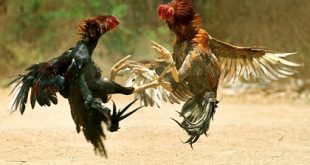Wolves are fascinating creatures that have evolved to be apex predators in their ecosystems. Every part of their body is uniquely adapted to fulfill specific functions that contribute to their survival. From their keen senses to their powerful physical abilities, wolves are masterpieces of nature. In this article, we will delve into the anatomy of wolves by examining some key body parts and their respective functions.
A Body Part of A Wolf

1. The Head and Skull
The head of a wolf is robust and well-structured, designed to support its predatory lifestyle. The skull houses powerful jaws, sharp teeth, and sensory organs that are crucial for hunting and communication.
- Jaws and Teeth: Wolves have 42 teeth, including sharp canines and robust molars. The canines, which can grow up to 2.5 inches long, are designed for gripping and piercing prey. The molars and carnassial teeth are specialized for crushing bones and tearing meat. The wolf’s bite force, which exceeds 400 pounds per square inch, allows it to take down large prey like deer and elk.
- Eyes: A wolf’s eyes are forward-facing, giving it excellent depth perception. This binocular vision helps wolves judge distances accurately, which is critical during hunts. Wolves are also crepuscular, meaning their vision is adapted to low-light conditions, allowing them to be effective hunters at dawn and dusk.
- Ears: Wolves have large, upright ears that can rotate independently. Their acute hearing enables them to detect sounds up to six miles away in open areas and two miles in forests. This ability helps them locate prey, communicate with pack members, and detect potential threats.
- Nose: A wolf’s sense of smell is one of its most developed senses. It has about 200 million scent receptors (compared to a human’s 5 million), enabling it to detect prey from miles away. The nose also plays a role in communication by picking up scent markers left by other wolves.
2. The Neck and Shoulders
The neck and shoulders of a wolf are muscular and powerful, allowing for a range of essential functions:
- Carrying Prey: Wolves often need to drag or carry their kills over long distances. Their strong neck muscles provide the necessary strength for this task.
- Hunting: The shoulders are pivotal during a chase. They allow for a wide range of motion in the forelimbs, enabling wolves to make sharp turns and pounce effectively on their prey.
- Defense and Dominance: During confrontations, wolves use their necks and shoulders to display dominance or fend off rivals. The thick fur around the neck also offers protection during fights.
3. The Torso and Internal Organs
The torso of a wolf houses vital organs and provides the strength and endurance required for their active lifestyle.
- Lungs and Heart: Wolves are endurance hunters. Their large lungs and efficient cardiovascular system allow them to sustain high levels of activity over long periods. They can run at speeds of 35-40 mph in short bursts and maintain a steady pace of 5-6 mph for several hours during a hunt.
- Stomach: Wolves have a flexible digestive system that allows them to eat up to 20 pounds of meat in a single meal when food is scarce. This ability is crucial for survival in environments where food availability can be unpredictable.
- Spinal Structure: The spine of a wolf is highly flexible, allowing for a smooth, bounding gait that conserves energy during long-distance travel.
4. The Legs and Paws
The legs and paws of a wolf are perfectly adapted for covering large distances and navigating diverse terrains.
- Legs: Wolves have long, lean legs that contribute to their ability to travel great distances. The hind legs are particularly powerful, providing the thrust needed for running and jumping.
- Paws: A wolf’s paws are large and padded, acting as shock absorbers during high-speed chases. The pads also provide traction on slippery surfaces like snow and ice. Additionally, wolves have webbed toes, which help them move efficiently through deep snow and swim across rivers.
- Claws: The claws of a wolf are non-retractable and serve as tools for digging dens, gripping prey, and providing additional traction while running.
5. The Tail
The tail of a wolf is more than just an extension of its body; it plays a critical role in communication and balance.
- Communication: Wolves use their tails to convey emotions and intentions to other pack members. A raised tail indicates dominance or excitement, while a lowered or tucked tail signals submission or fear.
- Balance: The tail helps wolves maintain balance, especially during fast movements or sharp turns.
- Insulation: In cold climates, wolves often curl up and cover their noses with their tails to conserve heat while sleeping.
6. The Fur Coat
A wolf’s fur is its primary defense against the elements. Their double-layered coat consists of a dense undercoat and longer guard hairs.
- Insulation: The undercoat traps air close to the body, providing excellent insulation against cold temperatures. Wolves shed this layer during warmer months to stay cool.
- Camouflage: The color of a wolf’s fur varies depending on its habitat, ranging from white in Arctic regions to gray and brown in forests. This coloration helps them blend into their surroundings.
- Protection: The outer guard hairs are water-resistant, protecting the wolf from rain and snow.
7. The Brain
The brain of a wolf is a highly developed organ that enables complex social behaviors, problem-solving, and hunting strategies.
- Social Intelligence: Wolves live in packs with a strict hierarchy. Their brains are wired for cooperation and communication, which are essential for maintaining pack dynamics.
- Problem-Solving: Wolves are known for their ability to solve problems and adapt to new challenges. For example, they can alter their hunting strategies based on the behavior of their prey.
- Memory and Learning: Wolves have excellent memories, which help them remember the locations of prey, dens, and territorial boundaries.
Conclusion
Every body part of a wolf is a testament to the species’ remarkable adaptability and resilience. From their sharp senses to their powerful physical abilities, wolves are equipped to thrive in diverse environments. Understanding the anatomy of wolves not only highlights their biological brilliance but also deepens our appreciation for these iconic creatures of the wild.


